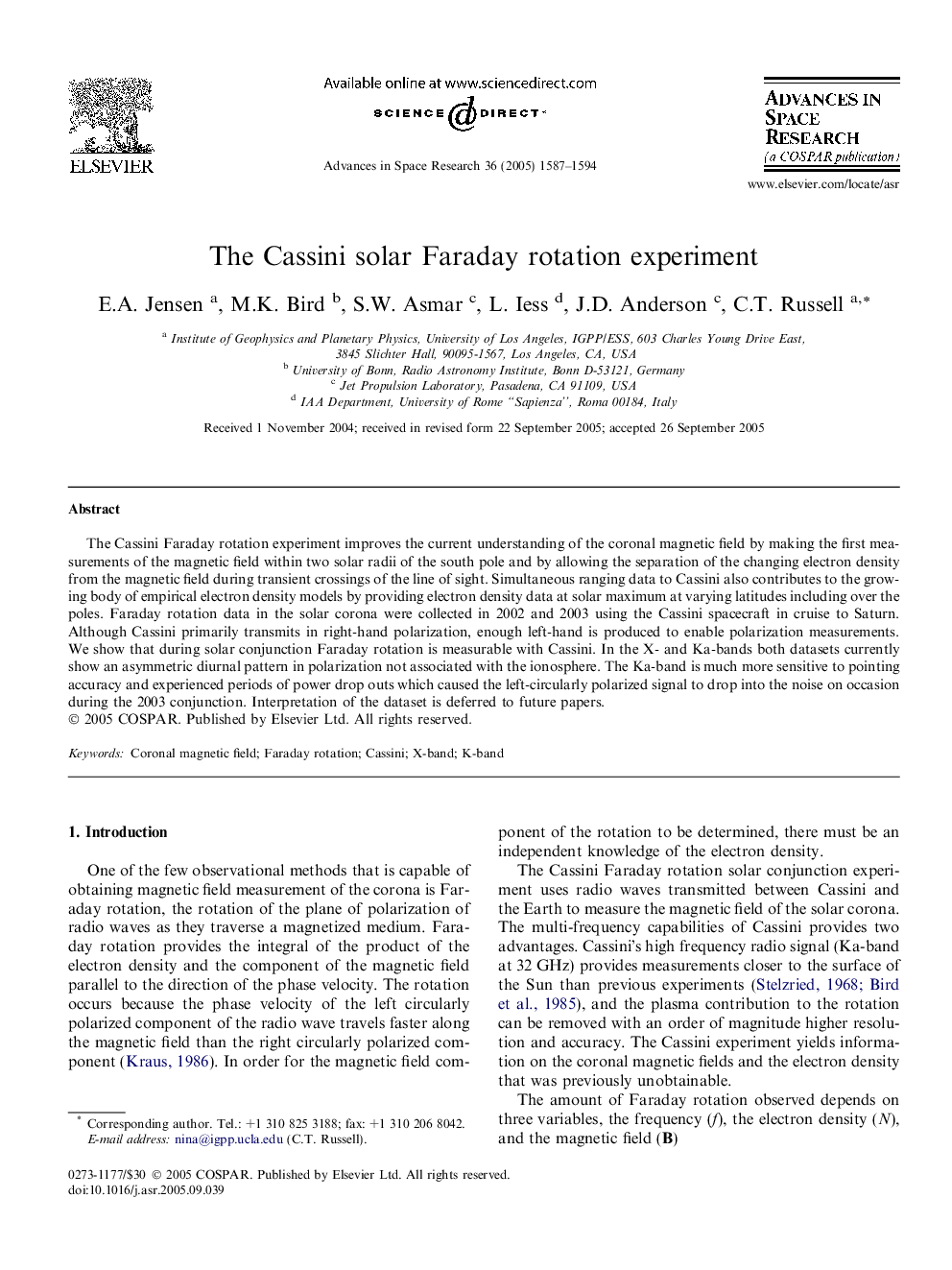| Article ID | Journal | Published Year | Pages | File Type |
|---|---|---|---|---|
| 10694985 | Advances in Space Research | 2005 | 8 Pages |
Abstract
The Cassini Faraday rotation experiment improves the current understanding of the coronal magnetic field by making the first measurements of the magnetic field within two solar radii of the south pole and by allowing the separation of the changing electron density from the magnetic field during transient crossings of the line of sight. Simultaneous ranging data to Cassini also contributes to the growing body of empirical electron density models by providing electron density data at solar maximum at varying latitudes including over the poles. Faraday rotation data in the solar corona were collected in 2002 and 2003 using the Cassini spacecraft in cruise to Saturn. Although Cassini primarily transmits in right-hand polarization, enough left-hand is produced to enable polarization measurements. We show that during solar conjunction Faraday rotation is measurable with Cassini. In the X- and Ka-bands both datasets currently show an asymmetric diurnal pattern in polarization not associated with the ionosphere. The Ka-band is much more sensitive to pointing accuracy and experienced periods of power drop outs which caused the left-circularly polarized signal to drop into the noise on occasion during the 2003 conjunction. Interpretation of the dataset is deferred to future papers.
Related Topics
Physical Sciences and Engineering
Earth and Planetary Sciences
Space and Planetary Science
Authors
E.A. Jensen, M.K. Bird, S.W. Asmar, L. Iess, J.D. Anderson, C.T. Russell,
